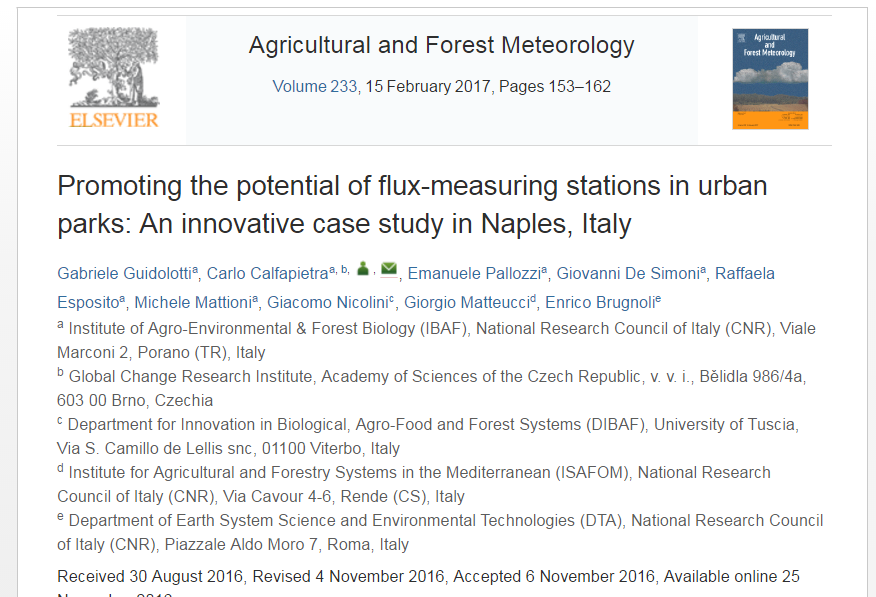Bosco di Capodimonte – Promoting the potential of flux-measuring stations in urban parks: An innovative case study in Naples, Italy
j F Y in Uncategorized
The Urban forests and parks are living systems integrated in highly anthropic areas, where they establish close interactions with all the other systems around. Thanks to those interactions, urban forests provide many ecosystem services to people and to the whole urban environment. One of the most important is the absorption of chemically and radiatively-active trace gases and thus the effect on local air quality. Beyond the main greenhouse gases (CO2, H2O and CH4), in urban areas a relevant role is played by the photochemical pollution mainly constituted by O3 and particulate matters.
Despite their importance, experimental sites monitoring trace gases fluxes in urban forest ecosystems and parks are still scarce. In this paper, we present for the first time the experimental station of Real Bosco di Capodimonte, located within the city of Naples. The vegetation is mainly composed by Quercus ilex with some patches of Pinus pinea and meadows. The site is equipped with state of the art instruments to measure concentrations and exchanges of CO2, H2O, CH4, O3, PM, VOCs and NOx by the eddy covariance technique. It represents an interesting and rare opportunity to investigate the interactions between urban vegetation, anthropogenic pollutants and secondary photochemical compounds.







